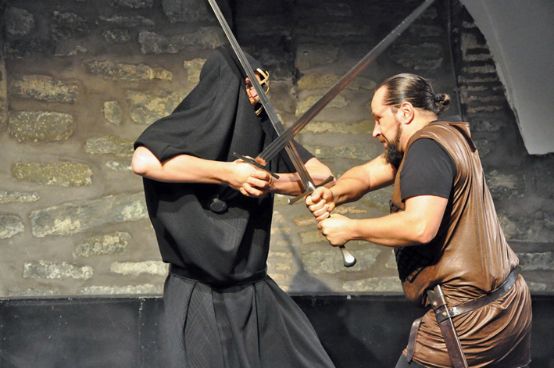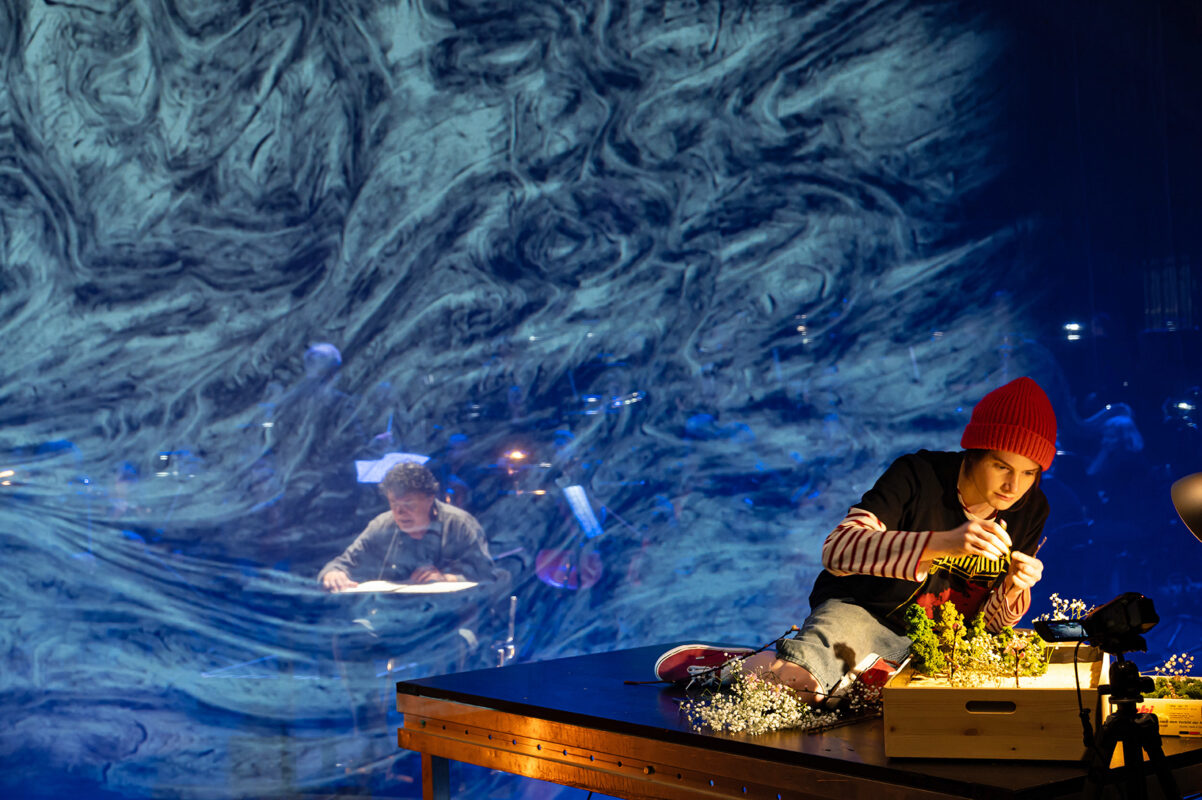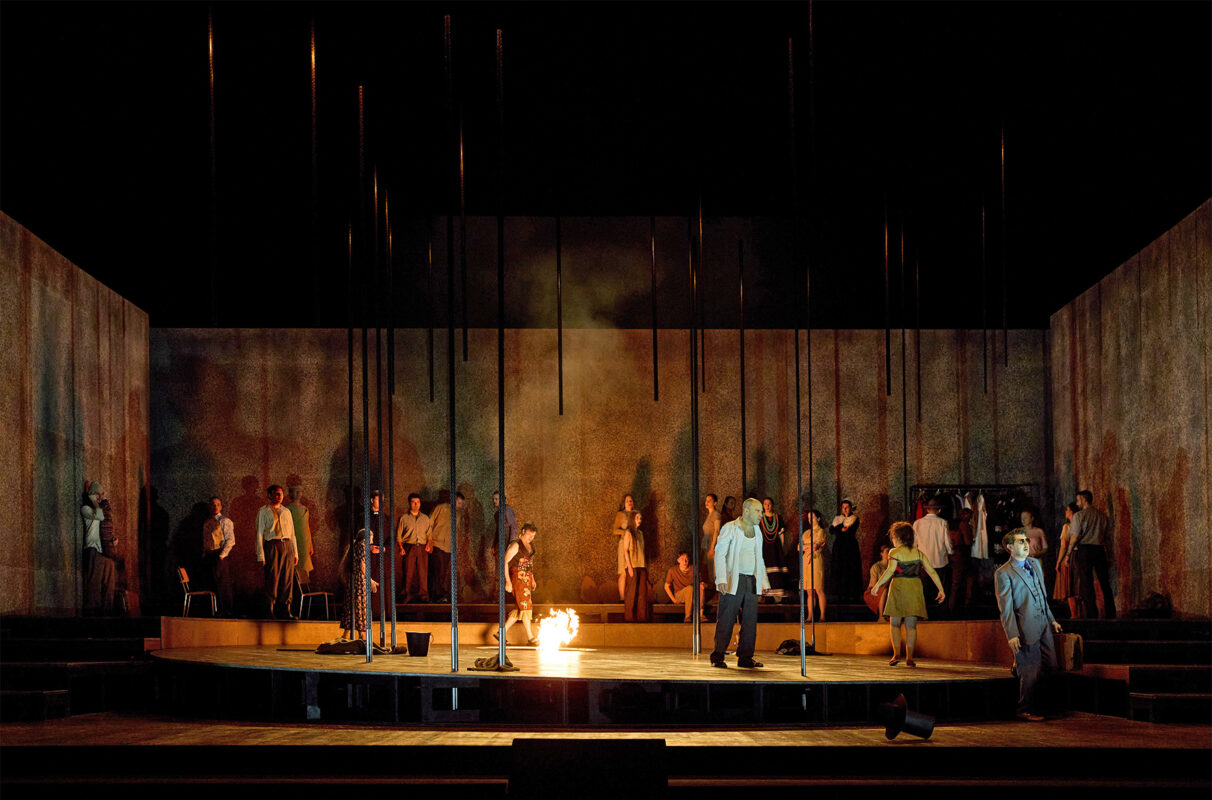20 years of pleasurable downsizing
The opera in the buttonhole began as a one-off project. Today, the Zurich mini-opera house in the Stok Theater is an institution.

If there was a prize for the smallest opera house in the world - the Opera in the buttonhole would be a hot candidate for this. Twenty years ago, mezzo-soprano Rosina Zoppi wanted to do "something Spanish" with her Spanish pianist and staged a zarzuela by José Serrano in Keller 62: "It came out well, then we just carried on," Zoppi reports laconically. At the time, the performers took part out of idealism and for a small fee: "Foundations are understandably cautious at first. If it works once or twice, the money flows more easily." Today, Zoppi can pay reasonable fees and hire good people. Right from the start, the concept was "small but mighty", although the original work does not always have to be small and mighty. On the contrary, the singer often brings grand opera to the stage, albeit radically scaled down.
Last year, for example, she chose the Grand Opéra Marie Stuart by the Swiss composer Louis Niedermeyer: a five-act romantic opera with almost 20 soloists, ballet, chorus and orchestra. At the Stok Theater, what remained was a heavily abridged score, six singing performers and a four-piece wind ensemble (flute, oboe, clarinet and bassoon): "It worked wonderfully," beams the artistic director, although she admits that such radical downsizing is not possible with all composers: "I love Ravel, for example, but for the life of me I don't know how you could reduce this music to just a few instruments."
Excavations under the red pencil
"When I look for pieces, I first look for themes. Then I look for suitable settings. Many libraries just throw their treasures at you on the internet," says Zoppi. It's more difficult in Italy: "For the score of our next year's production, the Hamlet opera Amleto by Saverio Mercadante, we had to go through the publisher. But they only had the first two pages of the play". They finally found what they were looking for at the Scala library. There was a handwritten score there, which first had to be digitized.
There are some well-known names among the composers who have come to the fore in the last two decades; less well-known, however, are the pieces, such as The Zoo (Arthur Sullivan), Marc'Antonio e Cleopatra (Johann Adolf Hasse), Bunbury (Paul Burkhard), Prestami tua moglie (Ruggero Leoncavallo), The Bear (Willam Walton), Ô mon bel inconnu (Reynaldo Hahn), L'importanza di esser Franco (Mario Castelnuovo-Tedesco), Geneviève de Brabant (Jacques Offenbach).
The director is personally responsible for the dramaturgy. She doesn't skimp on the red pencil, cuts entire parts, merges others, has men sing trouser roles and vice versa. Choruses are often omitted completely or are given to the soloists in the ensemble. And then there is the orchestra: anyone who can reduce a romantic orchestra to four wind instruments can arrange a baroque opera for flute, lute, double bass and harpsichord, as was the case with this year's production.
The knight in disguise is a pop star
The buttonhole anniversary production, the five-act and originally five-hour opera Angelica, vincitrice de Alcina was composed by Johann Joseph Fux in 1716 to celebrate the birth of Prince Leopold in Vienna. The premiere of the opera, subtitled "Festa teatrale", took place outdoors on two islands in Vienna's Augarten park. The story comes from The speeding Roland (Italian: Orlando Paladino), the heroic epic from 1516 by Ludovico Ariost, which formed the basis for a number of musical stage works.
The best known are perhaps Handel's Alcina and Haydn's Orlando Paladino. In Fux's adaptation, Roland is missing, but the benevolent Princess Angelica appears, who at the end of the play is characterized by her magnanimous mercy towards the deceitful Alcina. Alcina loves both Medoro and Ruggero, both of whom she keeps on one of her islands. Medoro loves Angelica and Angelica loves Medoro. She therefore sets off for Alcina's island kingdom to free her lover. Meanwhile, Ruggero, who actually loves Bradamante, temporarily falls for Alcina's charms. Bradamante, disguised as a knight, and Angelica, whose magical powers are dwindling, finally prevail and are able to embrace their beloved.
The chamber-music realization of the piece by Oper im Knopfloch concentrates on the finely played and sometimes virtuoso singing aspects as well as the intimate interactions between the characters. Props and stage set pieces are almost completely dispensed with. Recited interludes allow the scenes to be placed in context. The dramaturgical trick of casting Bradamante with a pop singer translates the baroque sensory world into the present in an immediate way.
-

Publikumsnähe ist Programm. Foto: Niklaus Rüegg








